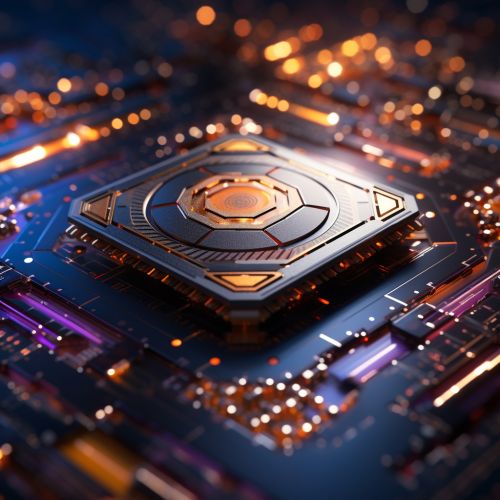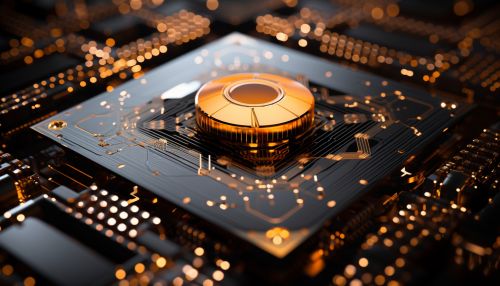Quantum Error Correction Codes
Introduction
Quantum error correction codes are a set of protocols designed to protect quantum information from errors due to decoherence and other quantum noise. Quantum error correction is essential for the practical realization of large-scale quantum computers and quantum communication systems.


Quantum Errors
Quantum errors are the result of unwanted interactions between a quantum system and its environment. These interactions can cause a quantum state to lose its coherence, a process known as decoherence, and can introduce errors in quantum computations. Unlike classical errors, quantum errors can be both bit flip errors, which flip a qubit from |0⟩ to |1⟩ and vice versa, and phase flip errors, which change the sign of the phase relationship between |0⟩ and |1⟩ in a qubit.
Quantum Error Correction Codes
Quantum error correction codes are designed to correct quantum errors by encoding a logical quantum bit (qubit) into multiple physical qubits. The fundamental idea behind quantum error correction is to exploit the quantum mechanical property of entanglement to detect and correct errors without disturbing the quantum information stored in the logical qubit.
Bit Flip Code
The simplest quantum error correction code is the three-qubit bit flip code, which can correct bit flip errors. In this code, a logical qubit |ψ⟩ = α|0⟩ + β|1⟩ is encoded into three physical qubits as |ψ⟩ = α|000⟩ + β|111⟩. If a bit flip error occurs on any one of the qubits, it can be detected and corrected by a series of quantum gates.
Phase Flip Code
The phase flip code is designed to correct phase flip errors. It is similar to the bit flip code but uses a different set of quantum gates to detect and correct errors. The phase flip code encodes a logical qubit into three physical qubits as |ψ⟩ = α|+++⟩ + β|---⟩, where |+⟩ = (|0⟩ + |1⟩)/√2 and |-⟩ = (|0⟩ - |1⟩)/√2.
Shor Code
The Shor code, named after Peter Shor, is a nine-qubit code that can correct both bit flip and phase flip errors. It is a combination of the bit flip code and the phase flip code and is the first quantum error correction code that could correct any arbitrary error on a single qubit.
Quantum Error Correction Protocols
Quantum error correction protocols are procedures for implementing quantum error correction codes. These protocols involve the use of quantum gates to encode logical qubits, detect errors, and correct errors. The most common quantum error correction protocols are the Steane code and the Knill-Laflamme code.
Fault-Tolerant Quantum Computing
Fault-tolerant quantum computing is a strategy for implementing quantum computations in a way that is robust against quantum errors. The idea is to use quantum error correction codes and protocols to continuously correct errors during a quantum computation. This allows for the construction of reliable quantum computers from unreliable quantum components.
Challenges and Future Directions
Despite significant progress, there are still many challenges to overcome in the field of quantum error correction. These include the development of more efficient quantum error correction codes, the realization of fault-tolerant quantum computing, and the understanding of the fundamental limits of quantum error correction.
See Also
- Quantum Computing
- Quantum Information
- Decoherence (quantum mechanics)
- Shor's algorithm
- Quantum error correction protocols
